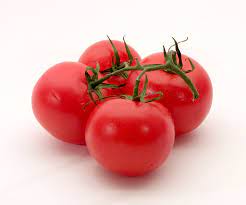Olusanjo Awotunde
Tomatoes come in different varieties – contrary to most farmers’ and consumers’ beliefs that tomato is tomato. Not only that you need to know various types of tomatoes that exist, you also need to know the type you are supposed to plant in order to make tomato farming a profitable business for you. I will be identifying four types and their brief characteristics in this article.
CHERRY TOMATOES
Cherry tomatoes are round and juicy, to the extent that they may pop when you bite into them.
One cherry tomato weighs about 15 grams. It contains only 3 calories and trace amounts of several vitamins and minerals (2Trusted Source). They’re the perfect size for salads or to eat alone as a snack.
ALSO READ: Know the cassava you are planting
GRAPE TOMATOES
Grape tomatoes are not as big as the cherish tomatoes, they contain less water and weigh about 8g. Grape tomatoes have only one calory. They are good in salad and can also be eaten as snack. Generally, grape tomatoes serve same purpose as the cherry tomatoes just that the former is less juicy than the later.
ROMA TOMATOES
Roma tomatoes are larger than cherry and grape tomatoes but not large enough to be used for slicing. Romas are also known as plum tomatoes.
One Roma tomato (62 grams) contains 11 calories and 1 gram of fiber (2Trusted Source).
They’re naturally sweet and juicy, making them a solid choice for canning or making sauces. They’re also popular in salads.
BEEFSTEAK TOMATOES
Beefsteak tomatoes are large, sturdy, and firm enough to hold their shape when being thinly sliced.
One large (182-gram) beefsteak tomato with a 3-inch (8-cm) diameter contains 33 calories, 2 grams of fiber, and 28% of the Daily Value (DV) for vitamin C — an immune-boosting antioxidant vitamin (2Trusted Source, 3Trusted Source).
They’re perfect to slice up for sandwiches and hamburgers. They’re also mild in taste and juicy, making them a good choice for canning or sauce-making.
There are other varieties of tomatoes; therefore, I implore you to go for what you need. All these varieties have their own uses. That’s why you must know what your target customers want before choosing a variety to plant.


